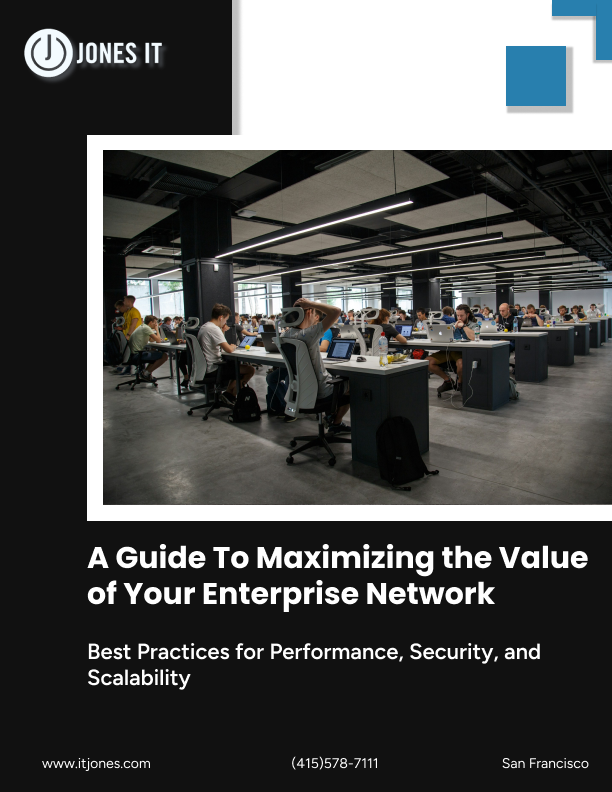White Paper
A Guide To Maximizing the Value of Your Enterprise Network
This white paper explores best practices for building secure, high-performance, and scalable enterprise networks, especially cloud-managed ones. This practical guide covers how to optimize for today’s demands, including AI and LLMs, with insights on key features, security strategies, real-world case studies, and the future of network automation.
Download Your Free Copy Of The White Paper.
Complete the form below to receive your copy instantly!
What You’ll Learn from This White Paper?
Inside, you'll discover:
The Business Case for Enterprise-Grade Networks: Understand why a strong network is crucial, especially with the increasing demands of technologies like LLMs and AI.
Key Features for Network Success: Learn about cloud-based centralized management, robust security & compliance measures, high availability & redundancy, and scalability.
Optimization Strategies: Explore network design & topology best practices, proper access point placement, cabling & infrastructure considerations, and performance optimization strategies.
Security & Compliance: Dive into Zero Trust principles, advanced threat protection, identity-based access control, and industry regulation compliance (HIPAA, PCI-DSS, SOC 2).
Real-World Case Studies: See how organizations have successfully implemented these strategies and achieved significant results.
Who Should Download This White Paper?
This white paper is designed for:
IT Managers and Network Administrators: Those responsible for the design, implementation, and maintenance of enterprise networks.
CIOs and Technology Leaders: Executives overseeing technology strategies and investments, who need a high-level understanding of network capabilities.
Business Owners and Operations Managers: Individuals who rely on a robust network to ensure smooth operations and business continuity.
Anyone planning to:
Expand or upgrade an existing network.
Support a growing or distributed workforce.
Enhance network security and compliance.
Adopt new technologies like AI and LLMs.
Modernize aging network infrastructure.
Why Download This White Paper?
This guide provides critical insights and actionable strategies to help you:
Optimize Network Performance: Learn best practices for network design, access point placement, network cabling, and traffic management to ensure high availability and low latency.
Scale Your Network Effectively: Understand how cloud-managed solutions and scalable architecture can support business growth and accommodate new technologies.
Reduce Downtime and Operational Costs: Benefit from centralized management, automation, and high availability features to minimize disruptions and streamline operations.
Learn From Real-World Examples: Review case studies that demonstrate successful implementations of enterprise networking strategies.
Frequently Asked Questions
-
A robust enterprise network is crucial for handling increased data demands (especially with technologies like LLMs and AI), ensuring business continuity, supporting real-time data for decision-making, enabling the proliferation of edge devices, and facilitating cloud computing. Additionally, it's vital for centralized management, automation, scalability, and robust security against cyber threats.
-
The document emphasizes several key features, including cloud-based centralized management for remote administration and multi-site deployments, robust security and compliance measures (like Zero Trust, firewalls, and MFA), high availability and redundancy to minimize downtime, and scalability to accommodate growth and changing business needs.
-
Key optimization practices include adopting a hierarchical network architecture (core, distribution, access layers), implementing network segmentation (VLANs, SSIDs, role-based access control), ensuring proper placement of access points (APs) for optimal Wi-Fi coverage, and considering cabling and infrastructure considerations (Cat6, Cat6a, fiber, PoE). Performance optimization strategies like QoS and AI-powered analytics are also discussed.
-
Key Factors for Optimizing Enterprise-Grade Networks include:
Hierarchical Network Design: Core, distribution, and access layers for scalability and efficiency.
Proper Access Point (AP) Placement: Strategic placement for optimal Wi-Fi coverage and performance.
Cabling & Infrastructure: Selection of appropriate cables (Cat6, Cat6a, fiber) and PoE implementation.
Performance Optimization: QoS, bandwidth management, and AI-powered analytics to prioritize and streamline traffic.
-
The document explores several future trends, including AI-driven automation for predictive network maintenance, the growth of next-generation wireless networking, SASE (Secure Access Service Edge) integration for unified networking and security, and the role of IoT and edge computing in enterprise networking. It emphasizes how these trends will shape the future of how businesses manage and secure their networks.

